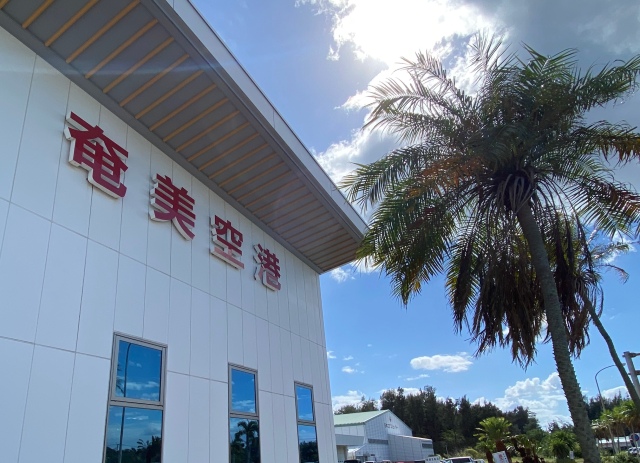
We encounter delectable rice balls that could have been made by mom on an island far from Japan’s mainland.
While Amami Oshima is the largest island in the Amami archipelago that’s governed by Kagoshima Prefecture, it’s actually closer to Okinawa than to the Japanese Honshu mainland. The island boasts plenty of gorgeous natural scenery, but there are also plenty of isolated areas without any stores or places to get food, so it’s a good idea to always stock up on plenty of snacks when traveling there.
Speaking of snacks, Amami Oshima is home to a super-local chain of convenience stores called Shimanchu Mart (島人マート), of which there are only five stores in total. It was at the Kasari location that our globetrotting Japanese-language correspondent Ikuna Kamezawa tried what was perhaps the best convenience store onigiri of her life.
▼ The Kasari location is the closest one to Amami Airport, though it would still take about an hour and a half to walk there.
It’s possible to go by bus, but due to the limited schedule, taking a car is by far the most convenient way to get there.
The interior of the store doesn’t seem that much different from other convenience stores.
Since it’s near the ocean, this location stocks some goods for swimming and fishing.
In fact, it sells a wide range of items that are necessary for daily life.
The more Ikuna looked around, the more she was struck by how peculiar the onigiri section seemed. For one, they didn’t appear to sell any “regular” triangle-shaped rice balls. Typical fillings like cod roe were scarce and most of them were crafted in the “onigirazu” style, or onigiri shaped more like sandwiches with sheets of nori enveloping the rice and fillings inside.
She recalled the Okinawan pork and egg onigiri “soul food” that has risen in popularity over the last several years–delectable rice balls with a filling of Spam and fried egg. They go by different names at different stores, but Shimanchu Mart’s name for this version is “luncheon onigiri.”
With those initial observations out of the way, she picked out the six most interesting-looking onigiri and proceeded to the register.
There were some chairs and tables outside where she sat to prepare for her taste test. It’s not too bad of a view when you can see the waves from your friendly neighborhood convenience store!
OK, on to the onigiri round-up. First up were the similarly named “Luncheon Onigiri” (180 yen [US$1.27]) and the “Luncheon” (120 yen).
As previously shared, the Luncheon Onigiri seems to be like the version more commonly known as the Spam and egg onigiri. It’s a thinly cooked omelet paired with a thick and salty cold cut of pork in the middle of homestyle-cooked rice. Ikuna thought that it was absolutely divine.
Meanwhile, the Luncheon was a bit of a mystery at first glance. After peeling back the layers a bit, she discovered that it consisted of a thin strip of pork with a healthy dollop of mayonnaise. The simpler nature of these fillings definitely enhanced the natural flavor of the rice and nori.
Next up were the “Pork and Egg Bomb” (228 yen) and the “Kokko Bomb” (218 yen).
At the end of the day, the former ended up being her favorite out of all of the ones that she sampled.
It was a little bit nerve-wracking to bite into the bright yellow “bomb,” but the fillings turned out to be the same as in the Luncheon Onigiri–with the major difference being that the omelette was encasing the entire outside this time. It was amazing how the same ingredients in different locations seemed to change the onigiri’s overall taste. A hint of tuna mayonnaise also added a nice burst of flavor in the center.
Likewise, the relatively simple Kokko Bomb (with “kokko” referring to the “cluck” of a chicken) consisted of an outer omelette casing filled with katsuobushi gohan (rice cooked with dried bonito flakes). When she bit into it, Ikuna somehow experienced a feeling of nostalgia. She then and there decided that pretty much anything would be delicious if it were wrapped in an omelette.
There were only two more onigiri to round off the list. Now, ordinarily Ikuna would never buy something like the “Fried Chicken Tuna Mayo Bomb” (228 yen), but she even gobbled that one up right away.
Last but not least, the basic “Salmon Onigiri” (120 yen) reaffirmed once and for all Shimanchu Mart’s ability to craft onigiri of the most delicious variety.
So what about the onigiri made them possibly the best convenience store ones that Ikuna had ever tasted? To put it simply, they didn’t taste like convenience store onigiri at all. She doesn’t mean that typical convenience store ones taste bad, either–just that they definitely seem like they’re made by a machine and not a living person. In contrast, she could have mistaken the ones from Shimanchu Mart for ones made by her mother. They weren’t incredibly tightly packed and hadn’t been in the refrigerator, so everything about them screamed “fresh.” They just seemed to be full of unconditional love, too.
For now, Ikuna will continue enjoying the special Amami onigiri while she’s on the island, but she may need this onigiri warmer device for when she returns to the office in Tokyo.
Reference: Shimanchu Mart
All images © SoraNews24
● Want to hear about SoraNews24’s latest articles as soon as they’re published? Follow us on Facebook and Twitter!
[ Read in Japanese ]


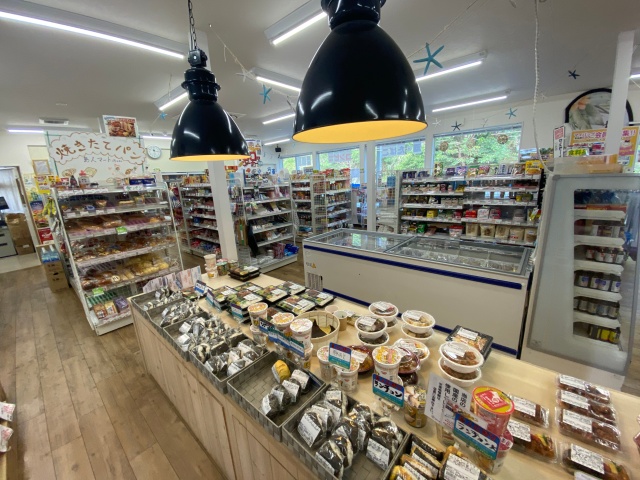
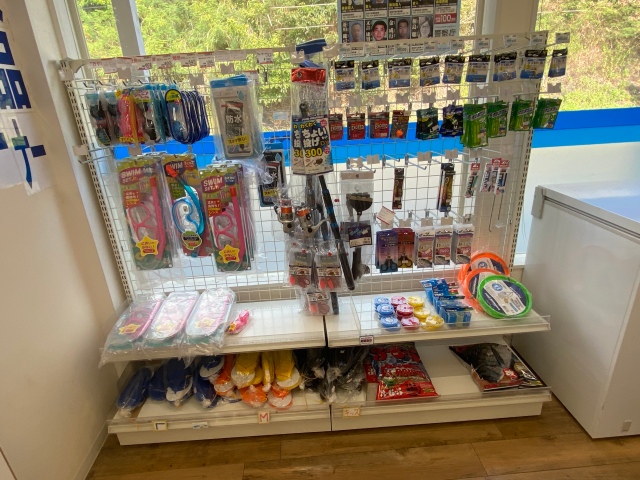
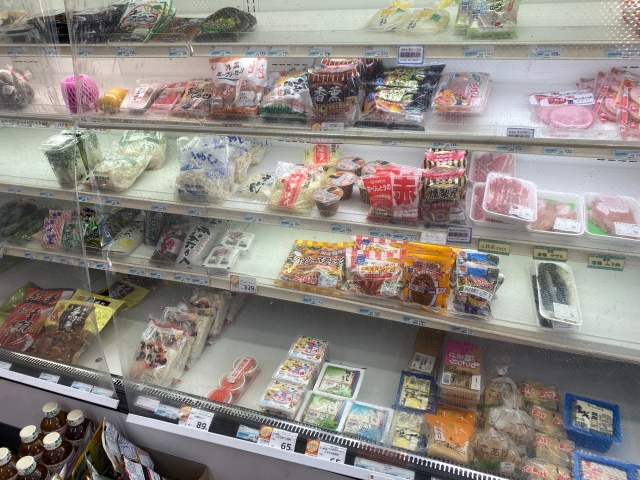
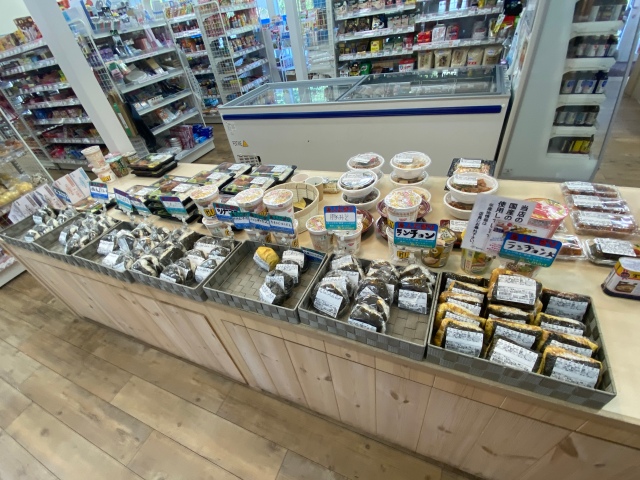
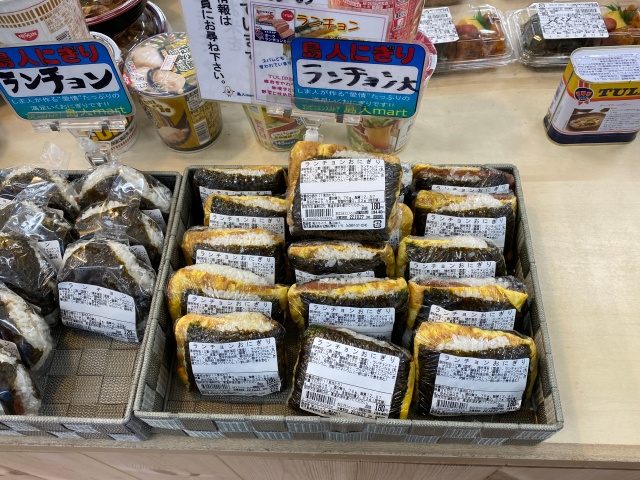
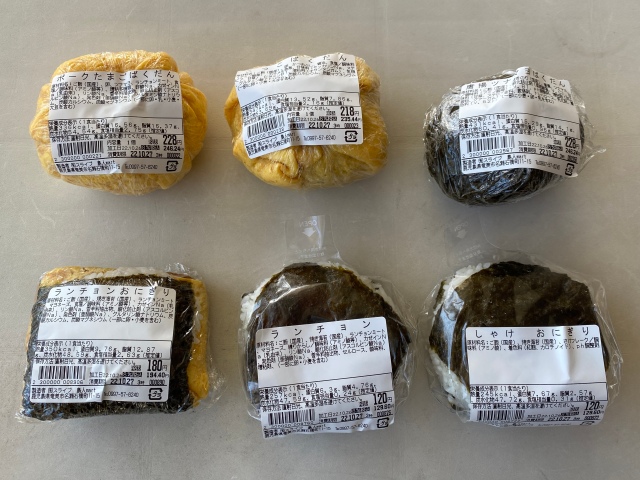
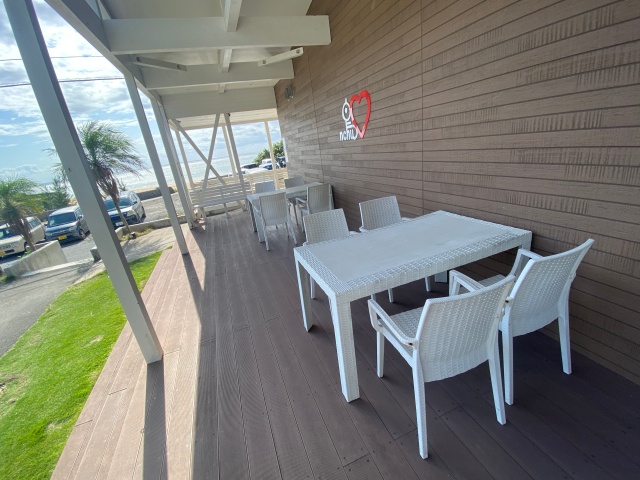
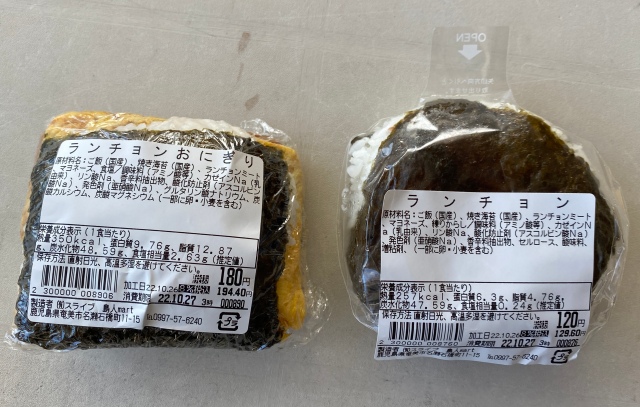
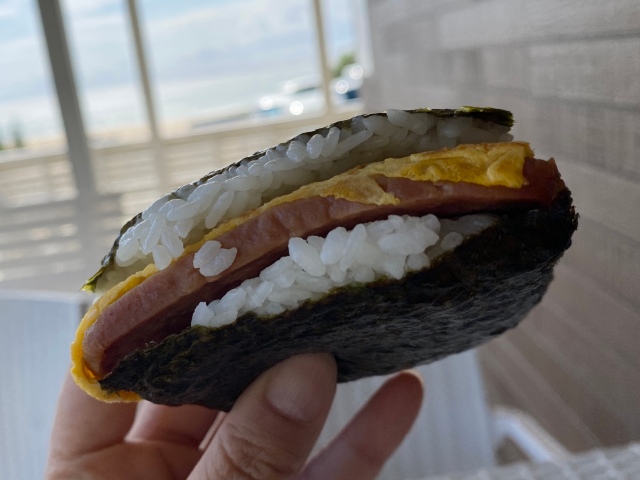
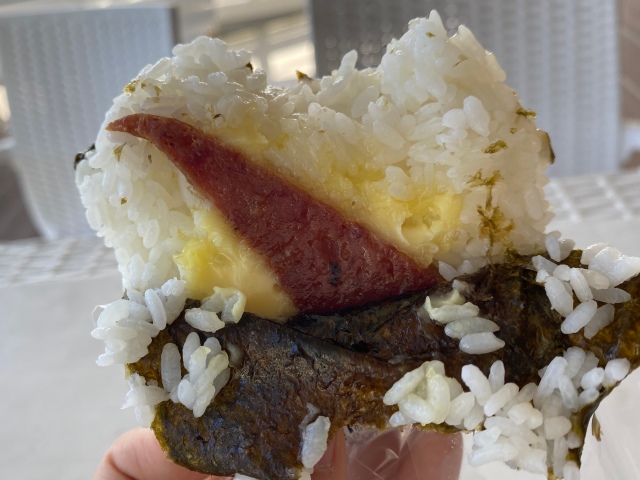
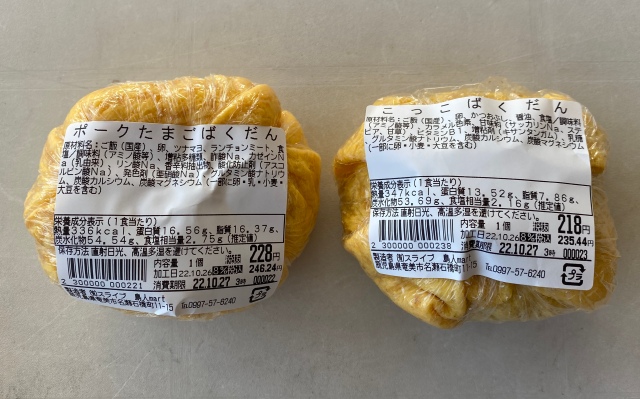
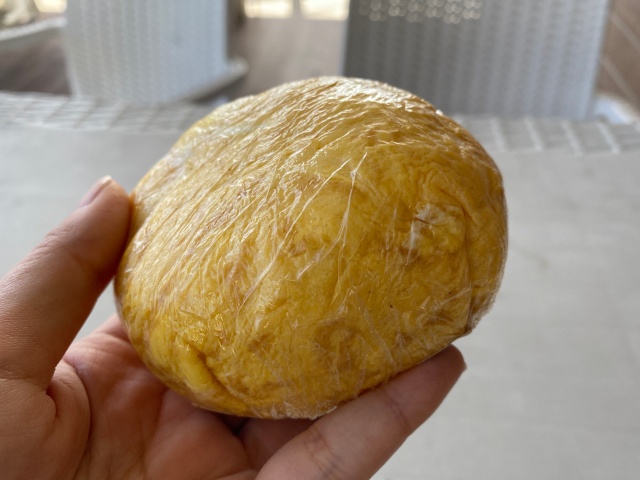

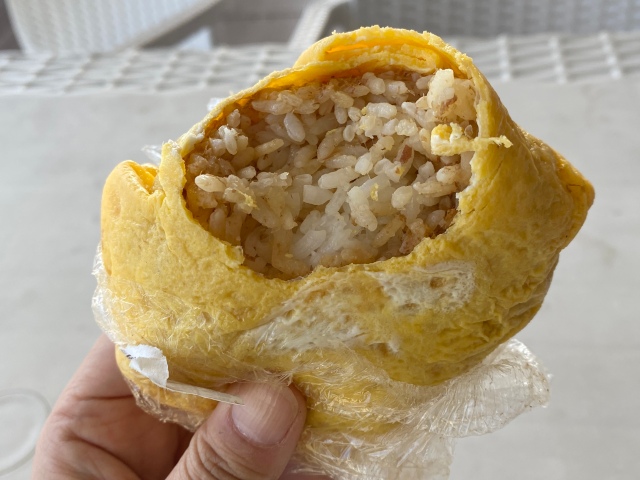
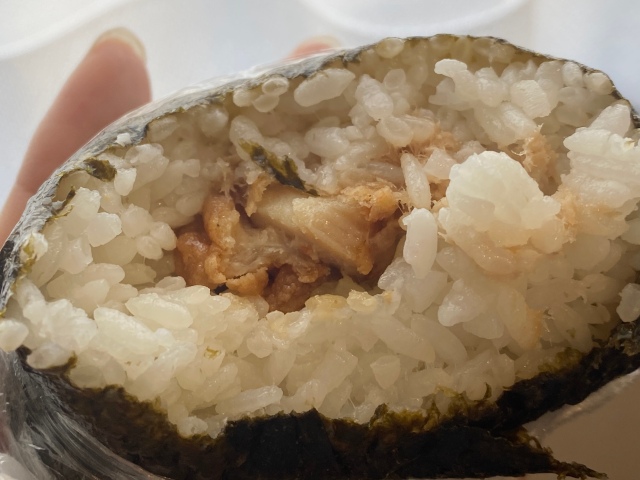
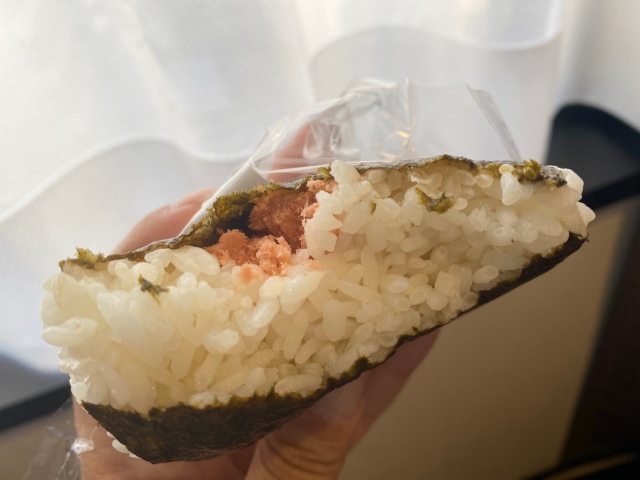
 The best-selling rice ball at Family Mart is…SPAM onigiri?
The best-selling rice ball at Family Mart is…SPAM onigiri? Okinawan soul fool Pork Tamago Onigiri sold not at a five-star restaurant, but at an airport
Okinawan soul fool Pork Tamago Onigiri sold not at a five-star restaurant, but at an airport Survey ranks convenience store rice balls – salmon, sea-dwelling poultry & plants steal the show
Survey ranks convenience store rice balls – salmon, sea-dwelling poultry & plants steal the show Should you warm up your convenience store onigiri rice balls in the microwave?【Taste test】
Should you warm up your convenience store onigiri rice balls in the microwave?【Taste test】 The surprising semi-secret ingredient in many Japanese convenience store rice balls: oil
The surprising semi-secret ingredient in many Japanese convenience store rice balls: oil Foreigner’s request for help in Tokyo makes us sad for the state of society
Foreigner’s request for help in Tokyo makes us sad for the state of society Japanese city loses residents’ personal data, which was on paper being transported on a windy day
Japanese city loses residents’ personal data, which was on paper being transported on a windy day Historical figures get manga makeovers from artists of Spy x Family, My Hero Academia and more
Historical figures get manga makeovers from artists of Spy x Family, My Hero Academia and more Akihabara pop-up shop sells goods made by Japanese prison inmates
Akihabara pop-up shop sells goods made by Japanese prison inmates Mt. Koya planning to instate visitor’s tax to cope with huge tourist numbers
Mt. Koya planning to instate visitor’s tax to cope with huge tourist numbers Ghibli Park now selling “Grilled Frogs” from food cart in Valley of Witches
Ghibli Park now selling “Grilled Frogs” from food cart in Valley of Witches Red light district sushi restaurant in Tokyo shows us just how wrong we were about it
Red light district sushi restaurant in Tokyo shows us just how wrong we were about it Sandwiches fit for a sumo served up in Osaka【Taste Test】
Sandwiches fit for a sumo served up in Osaka【Taste Test】 Osaka governor suggests lowering voting age to 0 to curb population decline
Osaka governor suggests lowering voting age to 0 to curb population decline Harajuku Station’s beautiful old wooden building is set to return, with a new complex around it
Harajuku Station’s beautiful old wooden building is set to return, with a new complex around it McDonald’s new Happy Meals offer up cute and practical Sanrio lifestyle goods
McDonald’s new Happy Meals offer up cute and practical Sanrio lifestyle goods Japanese ramen restaurants under pressure from new yen banknotes
Japanese ramen restaurants under pressure from new yen banknotes French Fries Bread in Tokyo’s Shibuya becomes a hit on social media
French Fries Bread in Tokyo’s Shibuya becomes a hit on social media Studio Ghibli releases new action figures featuring Nausicaä of the Valley of the Wind characters
Studio Ghibli releases new action figures featuring Nausicaä of the Valley of the Wind characters New private rooms on Tokaido Shinkansen change the way we travel from Tokyo to Kyoto
New private rooms on Tokaido Shinkansen change the way we travel from Tokyo to Kyoto Tokyo Tsukiji fish market site to be redeveloped with 50,000-seat stadium, hotel, shopping center
Tokyo Tsukiji fish market site to be redeveloped with 50,000-seat stadium, hotel, shopping center All-you-can-drink Starbucks and amazing views part of Tokyo’s new 170 meter-high sky lounge
All-you-can-drink Starbucks and amazing views part of Tokyo’s new 170 meter-high sky lounge Beautiful Ghibli sealing wax kits let you create accessories and elegant letter decorations【Pics】
Beautiful Ghibli sealing wax kits let you create accessories and elegant letter decorations【Pics】 Studio Ghibli releases Kiki’s Delivery Service chocolate cake pouches in Japan
Studio Ghibli releases Kiki’s Delivery Service chocolate cake pouches in Japan New definition of “Japanese whiskey” goes into effect to prevent fakes from fooling overseas buyers
New definition of “Japanese whiskey” goes into effect to prevent fakes from fooling overseas buyers Our Japanese reporter visits Costco in the U.S., finds super American and very Japanese things
Our Japanese reporter visits Costco in the U.S., finds super American and very Japanese things Studio Ghibli unveils Mother’s Day gift set that captures the love in My Neighbour Totoro
Studio Ghibli unveils Mother’s Day gift set that captures the love in My Neighbour Totoro More foreign tourists than ever before in history visited Japan last month
More foreign tourists than ever before in history visited Japan last month New Pokémon cakes let you eat your way through Pikachu and all the Eevee evolutions
New Pokémon cakes let you eat your way through Pikachu and all the Eevee evolutions Sales of Japan’s most convenient train ticket/shopping payment cards suspended indefinitely
Sales of Japan’s most convenient train ticket/shopping payment cards suspended indefinitely Sold-out Studio Ghibli desktop humidifiers are back so Totoro can help you through the dry season
Sold-out Studio Ghibli desktop humidifiers are back so Totoro can help you through the dry season Japanese government to make first change to romanization spelling rules since the 1950s
Japanese government to make first change to romanization spelling rules since the 1950s Ghibli founders Toshio Suzuki and Hayao Miyazaki contribute to Japanese whisky Totoro label design
Ghibli founders Toshio Suzuki and Hayao Miyazaki contribute to Japanese whisky Totoro label design Doraemon found buried at sea as scene from 1993 anime becomes real life【Photos】
Doraemon found buried at sea as scene from 1993 anime becomes real life【Photos】 Tokyo’s most famous Starbucks is closed
Tokyo’s most famous Starbucks is closed One Piece characters’ nationalities revealed, but fans have mixed opinions
One Piece characters’ nationalities revealed, but fans have mixed opinions We asked a Uniqlo employee what four things we should buy and their suggestions didn’t disappoint
We asked a Uniqlo employee what four things we should buy and their suggestions didn’t disappoint Princesses, fruits, and blacksmiths: Study reveals the 30 most unusual family names in Japan
Princesses, fruits, and blacksmiths: Study reveals the 30 most unusual family names in Japan Japanese convenience store showdown – Who’s got the best ikura rice balls?【Taste test】
Japanese convenience store showdown – Who’s got the best ikura rice balls?【Taste test】 Taste-testing the Attack on Titan rice ball that “shouldn’t be on sale”【Taste test】
Taste-testing the Attack on Titan rice ball that “shouldn’t be on sale”【Taste test】 Okinawa soul food: We try the most epic pork and egg onigiri rice balls in Japan
Okinawa soul food: We try the most epic pork and egg onigiri rice balls in Japan In celebration of Onigiri Day, we compare rice balls from three different convenience stores
In celebration of Onigiri Day, we compare rice balls from three different convenience stores Are high-end convenience store rice balls really packed with more ingredients?
Are high-end convenience store rice balls really packed with more ingredients? Haneda Airport’s new rice ball stand — Sister shop Tokyo’s best out-of-the-way onigiri spot
Haneda Airport’s new rice ball stand — Sister shop Tokyo’s best out-of-the-way onigiri spot Onigiri Bread from Japanese convenience store chain changes everything we know about rice balls
Onigiri Bread from Japanese convenience store chain changes everything we know about rice balls Less than half of Japanese people OK with bare hand-pressed rice balls, survey says, but why?
Less than half of Japanese people OK with bare hand-pressed rice balls, survey says, but why? Family Mart to celebrate 40th birthday by introducing onigiri with eco-friendly packaging
Family Mart to celebrate 40th birthday by introducing onigiri with eco-friendly packaging Japan’s big eats just got even bigger at this little-known cafe
Japan’s big eats just got even bigger at this little-known cafe Japan Railways recently revealed ramen-style rice balls in its convenience stores
Japan Railways recently revealed ramen-style rice balls in its convenience stores Make your best-tasting onigiri taste even better with this easy recipe! 【RocketKitchen】
Make your best-tasting onigiri taste even better with this easy recipe! 【RocketKitchen】 Ramen and girls bar: Where you can talk to women who aren’t dressed like hosts or maids
Ramen and girls bar: Where you can talk to women who aren’t dressed like hosts or maids Bizarre or brilliant? Takoyaki and okonomiyaki rice balls available in convenience stores now
Bizarre or brilliant? Takoyaki and okonomiyaki rice balls available in convenience stores now McDonald’s breakfast menu in Hong Kong is like nothing we’ve ever seen in Japan
McDonald’s breakfast menu in Hong Kong is like nothing we’ve ever seen in Japan We visit a restaurant called ‘Otaku’ in France, eat some otaku sushi
We visit a restaurant called ‘Otaku’ in France, eat some otaku sushi
Leave a Reply